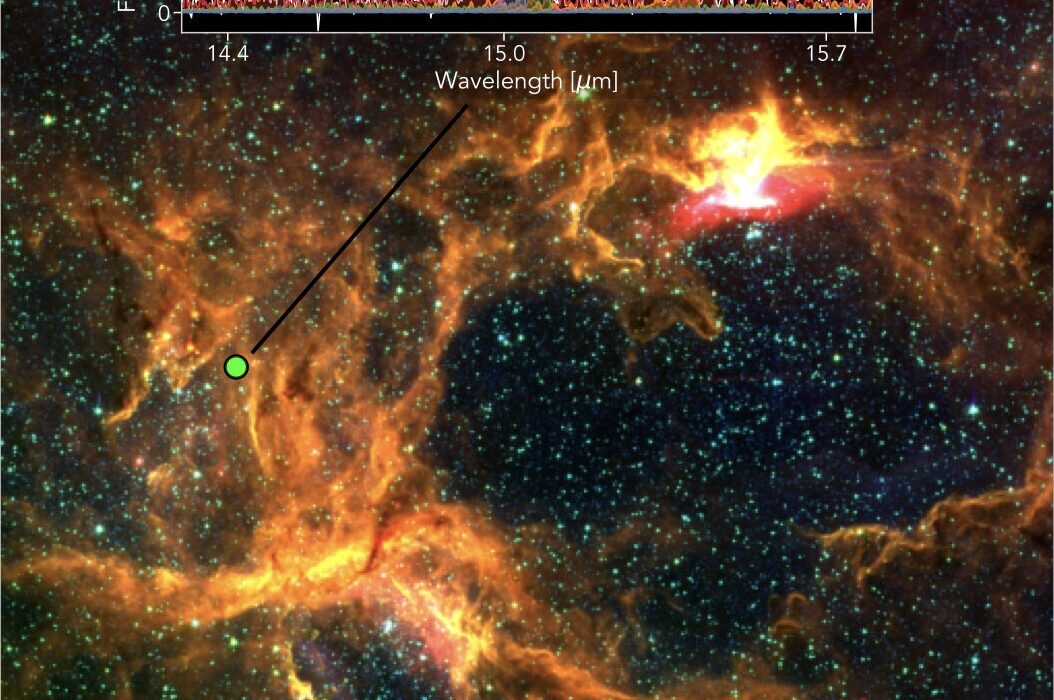In the vast menagerie of alien worlds scattered across our galaxy, few are as baffling—or as blisteringly extreme—as WASP-121b. This gas giant, discovered in 2015, defies our familiar sense of planetary logic. It hugs its parent star so closely that it completes an orbit in just 1.27 Earth days. On its dayside, the temperature soars above 3,000 degrees Celsius—hot enough to vaporize metals and fracture our assumptions about how planets evolve. But in this hellishly irradiated world, scientists have now uncovered something astonishing: the chemical fingerprints of its formation and evolution, etched into the very air it breathes.
With the help of the James Webb Space Telescope (JWST), astronomers have turned WASP-121b into a cosmic autopsy. By dissecting its atmosphere—layer by layer, molecule by molecule—they’ve reconstructed how this ultra-hot giant likely came to be. Their findings, published in Nature Astronomy, go far beyond mere detection of exotic gases. They offer the first conclusive evidence of silicon monoxide (SiO) in any planetary atmosphere and point to a dramatic birth story shaped by tiny icy pebbles, migrating gases, and violent planetary bombardment.
This is not just a story of atmospheric chemistry. It’s a story of how worlds are made in the chaos of early planetary systems—and how some emerge from the fire forever changed.
JWST Opens a Window into Inferno
WASP-121b is what astronomers call a “hot Jupiter”—a class of gas giants that orbit astonishingly close to their host stars, basking in a furnace of starlight that transforms their atmospheres into alien laboratories. With its unprecedented sensitivity and infrared resolution, JWST was deployed to observe this extreme world in detail never before possible.
Rather than taking a single snapshot, researchers used a technique called phase curve observation. As the planet orbited its star, JWST tracked how its light changed from different angles. This orbit-by-orbit approach allowed scientists to parse out how the planet’s temperature and composition vary from its blazing dayside to its comparatively cooler nightside.
What they found was nothing short of revolutionary. On the dayside, water vapor (H₂O) and carbon monoxide (CO) were clearly present, as expected for a hot, hydrogen-rich gas giant. But then came something no one had ever seen before: silicon monoxide (SiO)—a molecule previously theorized but never definitively detected in any planetary atmosphere, not even in our own solar system.
Why Silicon Monoxide Matters
The detection of SiO is not just a chemical curiosity. It’s a milestone. Silicon is what geologists call a “refractory element”—a type of material that typically exists as a solid, even under relatively high temperatures. To find it as a gas means conditions are so extreme that even the most stubbornly solid minerals have vaporized.
“This is the first conclusive identification of this molecule in any planetary atmosphere,” said Dr. Anjali Piette of the University of Birmingham. “Detecting SiO in WASP-121b’s atmosphere is groundbreaking.”
The presence of gaseous silicon oxides suggests that the dayside of the planet is essentially boiling away, its mineral components—like silicates and quartz—liberated into a gaseous state. This planetary cremation opens a window into what lies beneath the clouds of gas giants, hinting at the rocky core materials long hidden from view.
Moreover, these refractory elements likely didn’t originate from the hydrogen-rich gases of the early solar nebula alone. Their presence implies something more violent: a world built not just by accreting gas, but by being bombarded with rocky, mineral-rich objects.
The Case of the Missing Methane
Equally startling was what the researchers found on the other side of the planet. On WASP-121b’s nightside—perpetually turned away from the star like the dark half of a rotating coin—temperatures plummet to around 1,500°C. And in that relative cool, a new molecule emerged: methane (CH₄).
This detection baffled the scientists.
“Given how hot this planet is, we weren’t expecting to see methane on its nightside,” Dr. Piette admitted. Methane typically breaks down at high temperatures and shouldn’t persist under such conditions—unless something unusual is happening deep in the atmosphere.
That “something” appears to be vertical mixing—the turbulent churning of gases from the deeper, denser layers of the atmosphere up to the outer, infrared-visible envelope. This kind of mixing implies that the atmospheric dynamics of WASP-121b are far more complex than a static shell of gas wrapped around a hot core. Instead, the planet is alive with chemical circulation, moving gases from one region to another in giant atmospheric conveyor belts.
Such mixing is not just a curiosity; it has implications for how astronomers interpret exoplanet data more broadly. When modeling alien worlds, it’s no longer enough to look at surface-level compositions. The chemistry may be just the visible tip of a deep and dynamic iceberg.
Pebbles, Gas, and Fire: A Planet Is Born
Beyond identifying atmospheric gases, the research team went a step further. By measuring elemental ratios—the amounts of carbon, oxygen, hydrogen, and silicon—they could begin to piece together WASP-121b’s formation history.
Specifically, they examined the planet’s C/H, O/H, Si/H, and C/O ratios—critical fingerprints that reveal what kind of material the planet was made from and how that material was assembled. The patterns suggested that this planet likely formed from lightweight icy pebbles—containing gases like methane and water—that drifted inward through the protoplanetary disk during the solar system’s early days.
These pebbles would have evaporated as they approached the star, leaving behind gas that the planet could capture to build its thick atmosphere. At the same time, the planet seems to have endured a violent bombardment of rocky material—adding silicates and metals into the mix, and helping to explain the unusual abundance of refractory elements like silicon.
“In the dayside atmosphere, temperatures are high enough for refractory materials—typically solid compounds—to exist as gaseous components,” explained lead author Dr. Thomas Evans-Soma from the University of Newcastle in Australia. In other words, the rocks became gas. WASP-121b became a planet formed by both accretion and destruction—by the slow rain of pebbles and the thunder of cosmic collisions.
A Milestone for Planetary Science
This study does more than just tell the story of one unusual planet. It validates a powerful new approach to exoplanet research: using phase curves and infrared spectroscopy to not just observe atmospheres, but to reconstruct planetary origin stories.
For years, scientists have been eager to push beyond the simple detection of “gas giants” toward understanding how their internal chemistry connects to where and how they formed. WASP-121b is now a case study in how that’s possible.
Moreover, the detection of previously elusive molecules like SiO proves JWST’s potential to revolutionize the field. “The successful use of JWST to detect these elements and characterize the atmosphere of WASP-121b demonstrates the telescope’s capabilities and sets a precedent for future exoplanet studies,” Dr. Piette noted.
With JWST, astronomers are now able to peer into planetary atmospheres with clarity previously reserved only for solar system objects. They can measure elemental ratios, track circulation patterns, and even watch the chemical evolution of entire hemispheres in real-time.
The Edge of a New Frontier
What makes WASP-121b so fascinating isn’t just that it’s hot enough to melt iron or that its atmosphere glows with the vapor of minerals. It’s that, despite its inhospitable conditions, it has become a beacon of planetary science. In its fire and darkness, it holds answers to some of astronomy’s most fundamental questions: How do planets form? What determines their chemistry? And what might we expect to find on worlds circling distant stars?
This single gas giant, once just another blur of light in the sky, now stands as one of the most deeply studied exoplanets in existence. It has taught us that worlds can be born not in quiet, orderly accretion but in violent synthesis—built by icy drifters and pelted by rocky wreckage, its atmosphere a chemical memory of cataclysms long past.
As astronomers turn their telescopes toward other strange and sweltering exoplanets, they’ll do so with new tools, new insights, and a deeper understanding that thanks to WASP-121b, even the most extreme planets can become storytellers.
In the end, WASP-121b is not just a planet. It’s a puzzle box of formation, a relic of the galactic forge—and proof that even in the hottest shadows of the universe, the past still leaves its mark.






